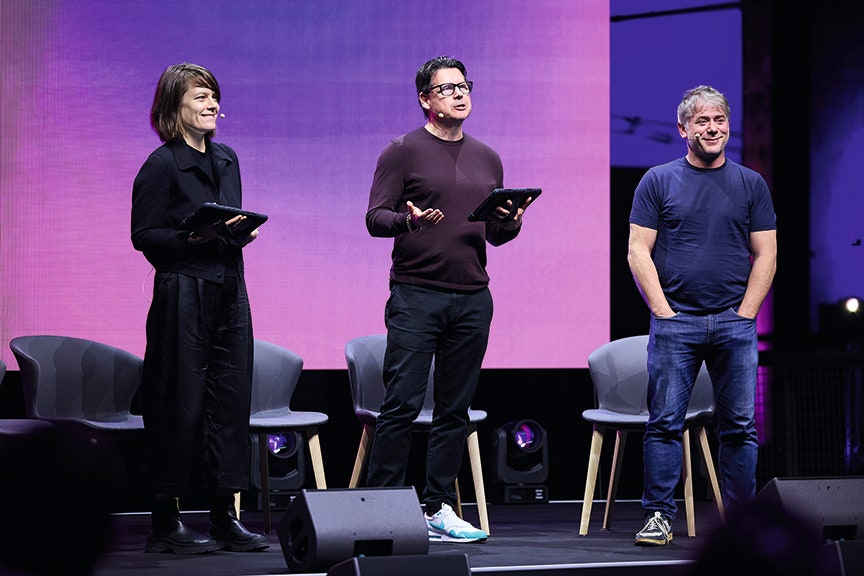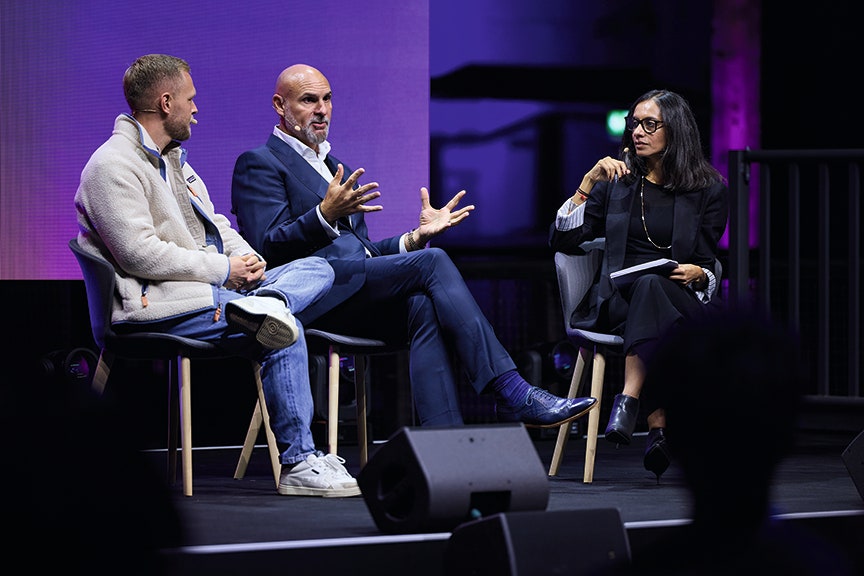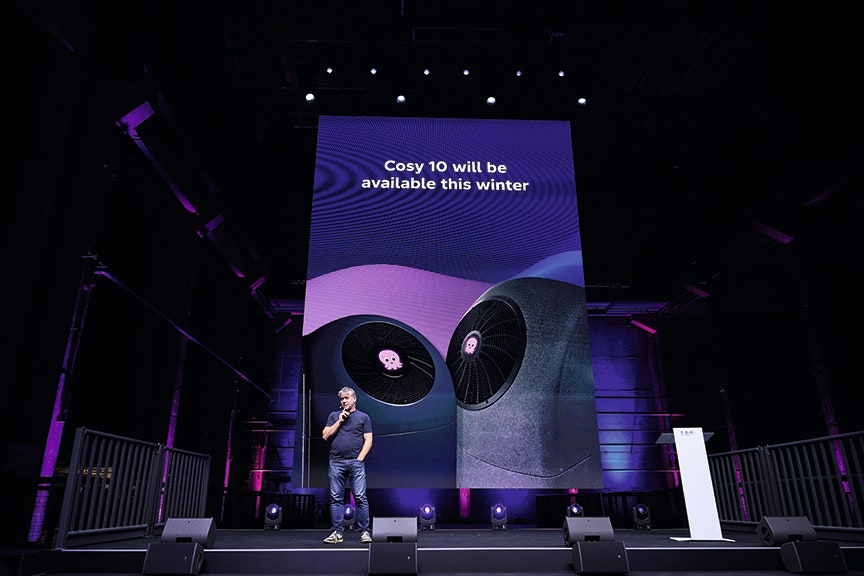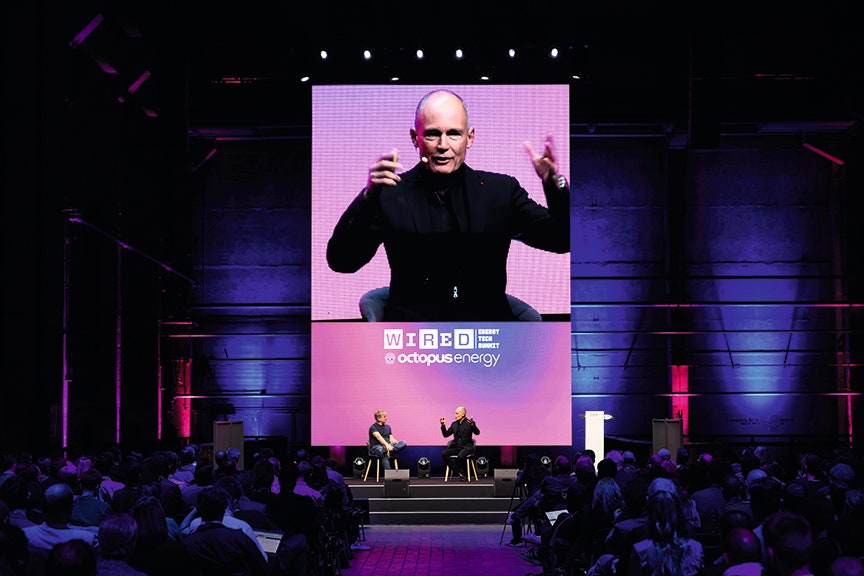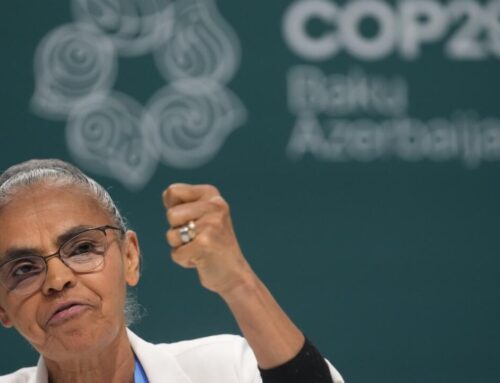How to Create a Future of Cheap Energy for All
November 24, 2024
Kraftwerk Berlin, the venue for the Energy Tech Summit with Octopus Energy, offered delegates a powerful lesson from history. Built by the East German government in 1961, the same year construction on the Berlin wall began, the vast turbine hall was hastily assembled to manage a crisis—the wall forced the Communist east and capitalist west to build grids that were not connected. Obsolete at reunification in 1989, it was a stark warning that walls and divisions are a choice the world can’t afford to make when faced with the urgent need to transition from fossil fuels to renewables.
“The biggest risk for Europeans,” Martin Schulz, former president of the European Parliament, told the room, “is political parties who tell citizens that lone nations are the future in a globalized, interdependent world.”
He pointed out that the European Union spent €60 billion in subsidies to citizens and businesses during the recent energy price spike. “What we need is to convince people that it is necessary to change the whole structure of the energy market—but how to create cheaper energy with so many political obstacles?”
Some of the solutions were discussed onstage. Zoisa North-Bond, the CEO of Octopus Energy Generation, spoke about the company’s Fan Club Tariff, which cuts bills for customers living near a wind farm by up to 50 percent when their local plant is producing excess power. “We’ve had 35,000 communities get in touch with us and ask for wind turbines,” she explained, citing the company’s community connection platform Winder. “It’s Tinder for wind, matching communities with wind turbines.”
Luo Xi, head of project development at Geidco, the company behind China’s proposed global grid, explained that linking 80 countries with smart grid technology and significant renewable resources could increase clean energy consumption to 71 percent and reduce global CO2 emissions to half of 1990 levels.
Aaron Ubaa, energy system engineering manager at Nigeria’s solar power pioneer Starsight Power, described how renewables were bringing stability to the country’s erratic and inconsistent power supply. The barriers? Restructuring the national grid. Internationally? Sub-Saharan Africa should be energy rich with solar power, he explained, but “it’s going to start with trying to bring the policy makers on board to incentivize both private and public sectors to buy in.”
The day carried constant notes of optimism. Francis Kéré, a Pritzker Prize–winning architect, described the innovations devised in building a primary school in Burkina Faso that overcame poor lighting and ventilation through creating bricks from local clay mixed with cement that kept the heat out, and using a clay and brick ceiling to circulate cool air without needing air conditioning.
Niclas Dahl, managing director of Oceanbird, discussed how wind-powered cargo ships could reduce shipping emissions by 90 percent. Clean tech pioneer and serial explorer Bertrand Piccard delighted the room with his account of circumnavigating the world in his sun-powered airplane Solar Impulse, pointing out that “aviation has launched 600 electric airplane programs since we flew around the world using just some rainbows.”
Dirk Hoke, CEO of Volocopter, picked up his point. The German company builds electric vertical take-off and landing air taxis. “They are quiet, safer than a helicopter, and sustainable,” he explained. “When the Kaiser saw a car, he said it was temporary and would never replace the horse. And we know how that ended. The Chinese government decided in March to open the low-altitude economy, so it’s just a matter of time.”
Even the world of motorsports had encouraging news. Formula One driver Kevin Magnussen recalled that when he started driving just over 10 years ago, the engines were 2.4-liter naturally aspirated V-8 fuel-guzzlers. “Today, it’s hybrid engines, and we’ve actually got more horsepower than we did when I started.”
And yet Magnussen touched on one of the day’s issues—consumers adopting clean energy tech. “Electric vehicles are the biggest opportunity today, because cars are the vastest bulk of emissions in the transport sector, the emissions are still growing, and the replacement technology is already there,” Julia Poliscanova, senior director at clean energy lobby group Transport & Environment, pointed out. “The reason EVs haven’t been taken up as much, in our view, is not because people don’t want to buy them or because there are no charges, but because we still lack affordable mass market models.”
The public believes charging infrastructure is a problem, she added, which is true in some places and less true in others. The problem? Bureaucracy. She struggles to get an EV charger as she lives in a flat and the building owner finds the paperwork prohibitive.
It was a theme that echoed throughout the day’s transport sessions, although Formula E CEO Jeff Dodds pointed out that his drivers started every race with only 50 percent of the energy they needed to finish the race. Drivers used their brakes to regenerate the battery, showing how a full “tank” wasn’t as important as consumers thought.
All the same, consumer resistance came up frequently. Frank Siebdrat, COO of energy efficient heating and cooling company Tado, pointed out that his company had connected approximately 1 million homes in Europe. “The EU aims to be climate-neutral in 2050, and to do so, we need to think and act collectively,” he explained. “In order to be collective, we need to make technology affordable. One of the most affordable and effective tools to decarbonize homes is smart technology. And using that we have saved already 2 billion tons of CO2.”
When asked why they chose Tado, he said that customers’ main reason was, “I want to save money. The second reason is, I want to make the planet a better place. If we cannot fulfill the first one,” he stressed, “the second one becomes less relevant.”
China seems to offer many solutions. Although coal consumption is climbing, it will peak in 2026 as renewables come online, with MingYang Smart Energy president Qiying Zhang outlining how floating and fixed offshore wind turbines are replacing fossil fuels. In August the company installed the world’s largest single-capacity offshore wind turbine, the MySE18.X-20MW, in Hainan, which can generate 80 million kWh annually, offsetting 66,000 tons of CO2.
Meanwhile, the country’s road transport electrification is moving at pace, thanks to heavy government subsidies. “In China, there were 570,000 EVs bought in August, and if you’re not driving an electric car in China, you’re considered a very boring person,” Stella Li, vice president of Chinese EV giant BYD, told the room. The new Z9 GT offered “intelligent driving,” meaning the car could park itself—even sliding sideways into a tight space, thanks to its flexible rear axle.
“The epicenter of the energy transition is China, which has a beautiful historical symmetry,” Arthur Downing, director of strategy at Octopus Energy explained. “Until the 18th century, the center of the world economically was China. It was the first energy transition of the industrial revolution in Britain that shifted that economic center of gravity to Europe. So we’re coming full circle at a ridiculous speed.”
Ann Mettler, European vice president of Bill Gates’ sustainable energy organization Breakthrough Energy, and Sabrina Schulz, strategic expert in climate, energy, and biodiversity, agreed that while Europe was making progress, it was falling behind and needed a blend of public and private finance to catch up by connecting and renewing grids and considering decentralized or even virtual power plants. “Policy certainty and public guarantees on investment in, say, green district heating is an absolute condition for investors,” Schulz argued.
Sana Khareghani, professor of practice in AI at King’s College London, suggested AI could help, managing and optimizing energy grids and helping develop new batteries to store power for when it’s most needed—helping reduce reliance on the fossil fuel powered generators of last resort.
Towards the end of the day, a warning from Ukraine gave the discussion sharp context. Yuliana Onishchuk, CEO and founder, Energy Act for Ukraine Foundation, described how vulnerable a modern nation’s energy supply really is.
“It is very easy to attack repeatedly, leaving us with no power for up to 56 hours,” she explained. “This summer, by losing one nuclear power plant, we lost 20 percent of our generation capacity. 1,900 rocket attacks over the last two years in Ukraine robbed us of 35 GW of generation capacity, costing us €51 billion.”
She explained how Ukraine managed to “plug into the European Union’s energy system by the second week of the war, preventing a total countrywide blackout.” The government was moving towards shifting its energy dependency away from easily attacked nuclear power plants to renewables for at least 27 percent of its power. Meanwhile, apps informed citizens of when power may be on or off so they could prepare food for the blackout.
Sitting in the turbine hall of the derelict power station built because of political isolationism, it was a sobering moment. Then Kidus Asfaw, founder and CEO of Kubik, an Ethiopian construction company that creates a low carbon, low-cost building material rivaling cement using just recycled plastic, had two positive messages. His company’s energy was very cheap, he explained, because Ethiopia’s energy supply is almost 100 percent renewable, and coming from the global south he had faith in the younger generation.
“I recently had a client sign up who’s a cement manufacturer—so they are a competitor and yet he took our product,” he recalled with a smile. “I asked him why he did it. He said, “because my kid would kill me if I didn’t.” That does make me very optimistic, that young people want a better future.”
This article appears in the January/February 2025 issue of WIRED UK magazine.
Search
RECENT PRESS RELEASES
Related Post
